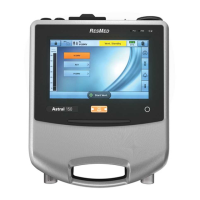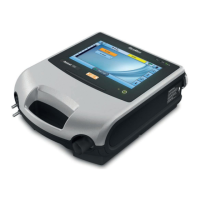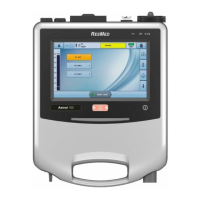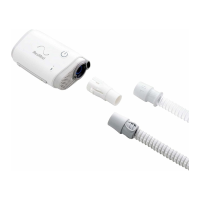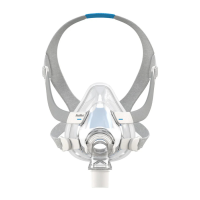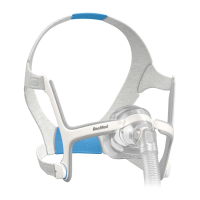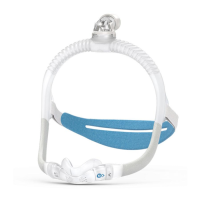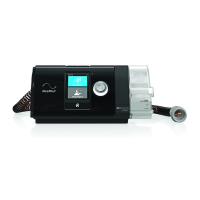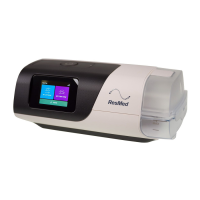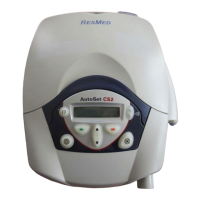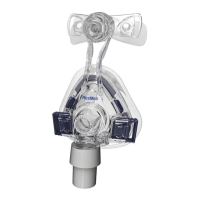Troubleshooting
English 155
Troubleshooting
If there is a problem, try the following suggestions. If the problem cannot be solved, contact your care
provider or ResMed.
Alarm troubleshooting
The most common reason for an alarm to sound is because the system has not been properly
assembled or a Learn Circuit has not been correctly performed for each program.
Notes:
• The alarm actions listed below are based on having the appropriate alarm settings for the patient's therapy.
When an adjustable alarm is activated, re-confirm the alarm settings.
• The alarm log and alarm settings are maintained when the device is powered down and in the event of a power
loss.
• If an alarm activates repeatedly, discontinue use, switch to a backup ventilator and return the device for
servicing.
If the alarm log reaches its storage capacity, the oldest data will be discarded to allow new entries to be
written to the log.
Alarm message Action
Apnoea
1. Check the patient's status and airway.
2. Verify that the therapy and alarm settings are appropriate.
3. Consider adjusting the trigger settings.
4. Inspect the circuit and proximal lines for leak. Perform a Learn Circuit.
Battery 1 fault
Check battery connections. If problem persists replace External Battery 1 with new
external battery.
Battery 2 fault
Check battery connections. If problem persists, replace External Battery 2 with a new
external battery.
Battery Inoperable
1. If the device has been stored in extreme temperatures, wait until the device returns
to room temperature.
2. If the device has been stored for long periods of time, the battery may have
discharged. Connect to mains power.
3. If the alarm persists, replace the battery.
Circuit fault
1. Check the circuit for water or leaks.
2. Perform a Learn Circuit.
3. If the alarm persists, replace the circuit.
Critically low battery Connect the Astral to mains AC power and allow the battery to recharge.
Device overheating
1. Move the device to a cooler location.
2. Inspect the air inlet for foreign materials.
3. Inspect the air inlet filter. If necessary, replace the air inlet filter.
4. Inspect the cooling fan inlet and outlet for foreign materials.
5. Remove the Astral from the mobility bag.
6. Check the circuit for obstructions.
7. Switch to a lower impedance circuit (if available).
8. Perform a Learn Circuit.
Disconnection alarm
1. Check the patient's status and airway.
2. Inspect the circuit and proximal lines for disconnection or excessive leak.
3. Verify that the therapy and alarm settings are appropriate.
4. Perform a Learn Circuit.

